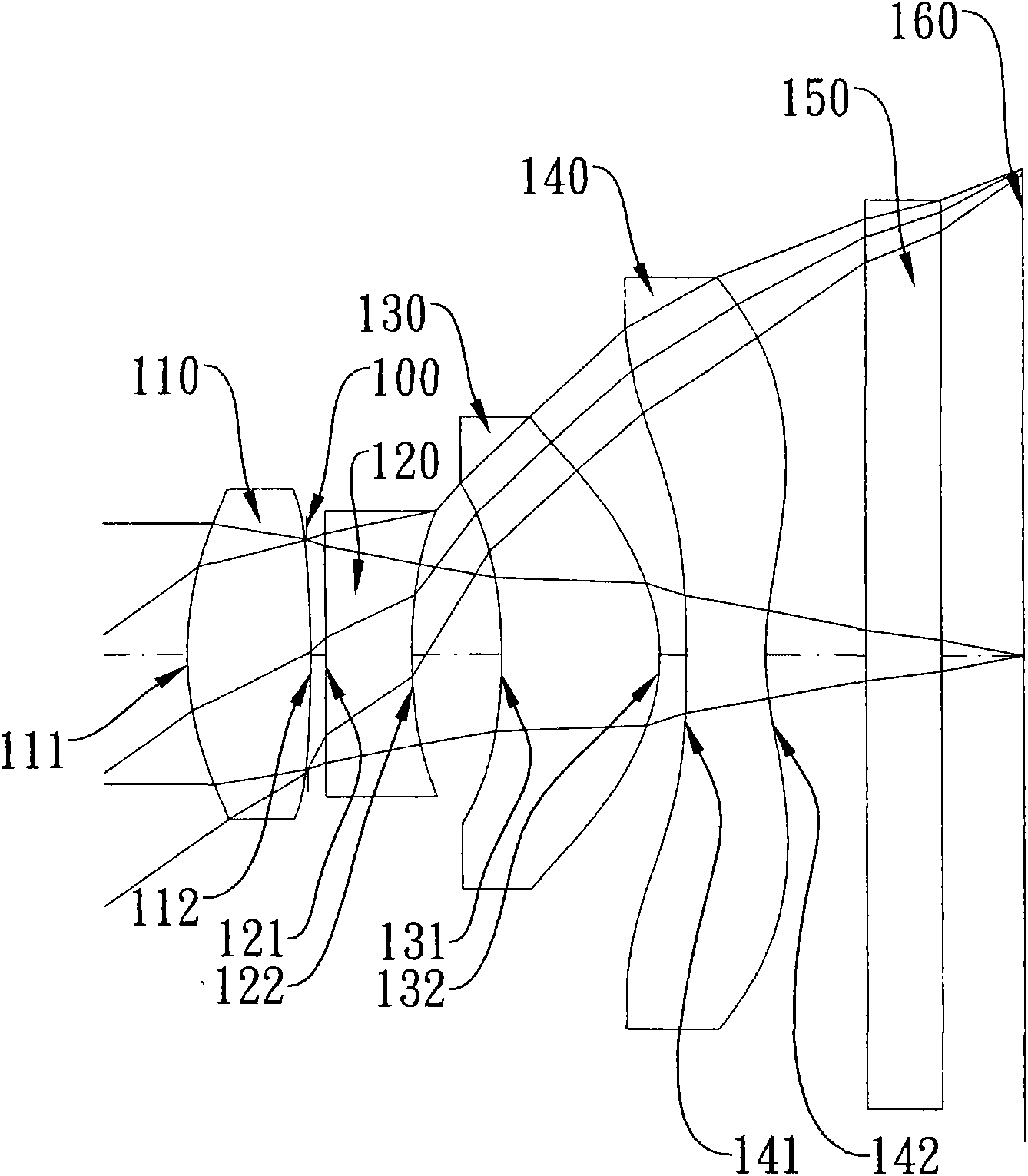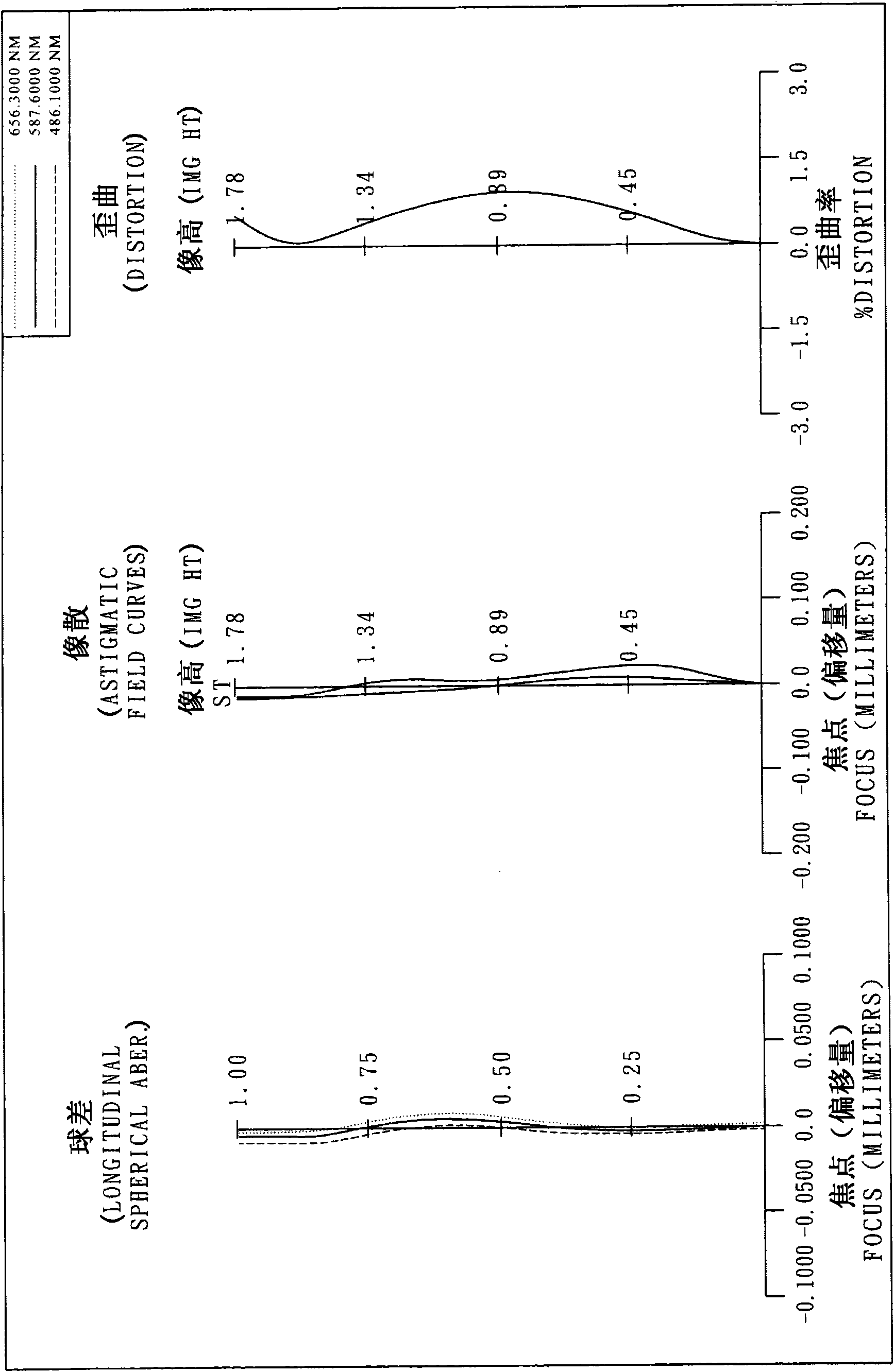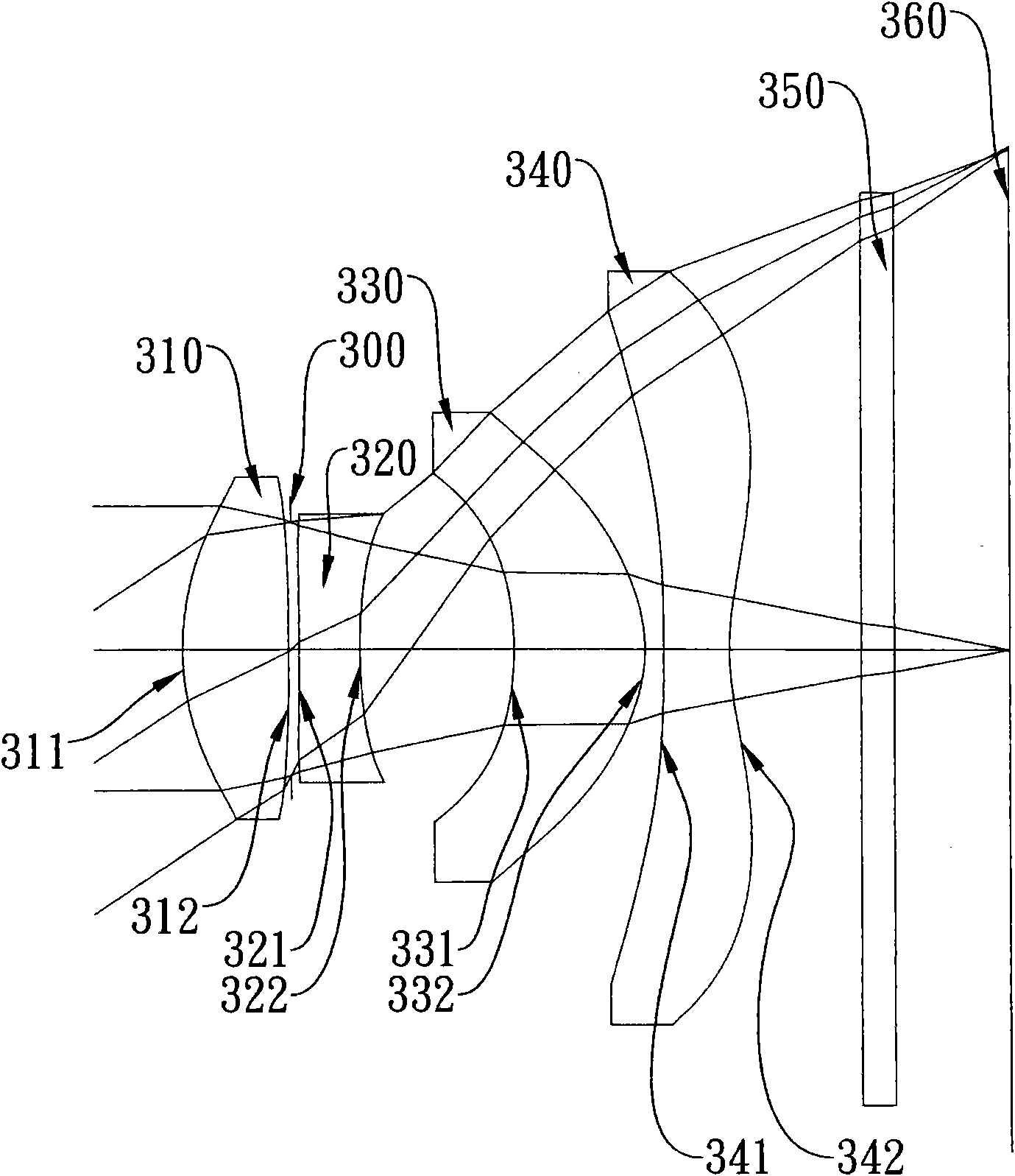Photographing optical lens
An optical lens and lens technology, which is applied in optics, optical components, instruments, etc., can solve problems such as increased system sensitivity, difficulty in controlling the yield rate in manufacturing, and difficulty in manufacturing, so as to reduce the volume of the lens, reduce the sensitivity, and improve the quality of the lens. The effect of resolution
- Summary
- Abstract
- Description
- Claims
- Application Information
AI Technical Summary
Problems solved by technology
Method used
Image
Examples
no. 1 example
[0131] Please refer to the first embodiment of the present invention figure 1 , for the aberration curve of the first embodiment, please refer to figure 2 . The photographic optical lens of the first embodiment is mainly composed of four lenses, which include sequentially from the object side to the image side:
[0132] A first lens 110 with positive refractive power, its object-side surface 111 and image-side surface 112 are convex, its material is plastic, the object-side surface 111 and image-side surface 112 of the first lens 110 are both aspherical ;
[0133]A second lens 120 with negative refractive power, its object-side surface 121 and image-side surface 122 are concave, its material is plastic, and the object-side surface 121 and image-side surface 122 of the second lens 120 are both aspherical ;
[0134] A third lens 130 with positive refractive power, its object side surface 131 is concave and image side surface 132 is convex, its material is plastic, the objec...
no. 2 example
[0162] Please refer to the second embodiment of the present invention image 3 , for the aberration curve of the second embodiment, please refer to Figure 4 . The photographic optical lens of the second embodiment is mainly composed of four lenses, which include sequentially from the object side to the image side:
[0163] A first lens 310 with positive refractive power, its object-side surface 311 and image-side surface 312 are convex, its material is plastic, the object-side surface 311 and image-side surface 312 of the first lens 310 are both aspherical ;
[0164] A second lens 320 with negative refractive power, its object side surface 321 and image side surface 322 are concave, its material is plastic, the object side surface 321 and image side surface 322 of the second lens 320 are both aspherical ;
[0165] A third lens 330 with positive refractive power, its object side surface 331 is concave and image side surface 332 is convex, its material is plastic, the objec...
no. 3 example
[0187] Please refer to the third embodiment of the present invention Figure 5 , for the aberration curve of the third embodiment, please refer to Figure 6 . The photographic optical lens of the third embodiment is mainly composed of four lenses, which include sequentially from the object side to the image side:
[0188] A first lens 510 with positive refractive power, its object-side surface 511 and image-side surface 512 are convex, its material is plastic, the object-side surface 511 and image-side surface 512 of the first lens 510 are both aspherical ;
[0189] A second lens 520 with negative refractive power, its object-side surface 521 and image-side surface 522 are concave, its material is plastic, the object-side surface 521 and image-side surface 522 of the second lens 520 are both aspherical ;
[0190] A third lens 530 with positive refractive power, its object side surface 531 is concave and image side surface 532 is convex, its material is plastic, the object ...
PUM
 Login to View More
Login to View More Abstract
Description
Claims
Application Information
 Login to View More
Login to View More - R&D
- Intellectual Property
- Life Sciences
- Materials
- Tech Scout
- Unparalleled Data Quality
- Higher Quality Content
- 60% Fewer Hallucinations
Browse by: Latest US Patents, China's latest patents, Technical Efficacy Thesaurus, Application Domain, Technology Topic, Popular Technical Reports.
© 2025 PatSnap. All rights reserved.Legal|Privacy policy|Modern Slavery Act Transparency Statement|Sitemap|About US| Contact US: help@patsnap.com



